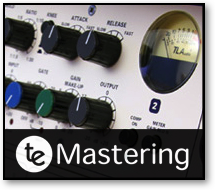





These production tips and tricks are designed to help you make the most of your music. Covering everything from mic technique to post-production, we hope you find them useful!




Industry news, useful links and what’s going on at Tenth Egg
© Tenth Egg Productions 2008




A different approach to music production.

music mastering

Tips and tricks from our engineers to help you with your music making



Music production in an all-digital environment definitely has its advantages - total recall, infinite undos and an exceptionally low noise-floor, to name but a few - but an easy trap to fall into is creating tracks that sound too clean and somehow not 'real'. Although there is a lot that can be achieved with the right plug-ins or samples, I'm going to suggest that to get really 'real' and unique results, external processing can be the key. No matter what your budget you can use some kind of outboard to give your tracks individual character and this production tip features some suggestions to get you started.
In the mastering studio we have the luxury of Apogee's excellent audio convertors, which means we can happily pass even the most subtle audio processing out to outboard gear without worrying about loss of quality on the round trip. Today most project studio soundcards turn in a pretty decent performance and while you'll always want to compare the signal coming back in with what went out to ensure that it's benefiting the audio you shouldn't hold back from using the outboard at your disposal. Having said that, the kind of processing that will work best is typically going to be a low-fi end of things. Here are a couple of examples:
Tip 14 : Sound ‘real’ with outboard processing





In short, experiment, find anything that can record or play back sound and throw your audio through it. Contrast your clean digital and dirty analogue elements and achieve productions that sound both rich and 'real'.
Record to tape: Many engineers still prefer the sound of analogue tape, praising it's warm, fat sound. Although most of us don't have access to a professional 2-inch recorder, we probably all have a cassette recorder lying around. Try bouncing down some drum loops, feeding the tape a nice hot level.
Run it through an amp: Guitar amps aren't just for guitars! Beats, synths, even vocals can all benefit from anything from subtle thickening to total overdrive. As well as the tweaking the sound via the amp you can also experiment with different microphone techniques.
Real reverb: Back before quality digital reverbs it wasn't uncommon for a studio to have one or more echo chambers - rooms specifically designed to be reverberant. A speaker and microphone setup would be permanently set up with a send and return from the mixing desk. If you've got a tiled bathroom or even a metal bin, then you've the makings of your very own echo chamber!
Old gear: 12Bit samplers, early digital reverbs, old EQs all have a character of their own and could help you create a signature sound. Sometimes the worse the condition, the more interesting the results!
Cheap gear: Cheap electronic instruments tend to produce a very raw sound. Inexpensive keyboards in particular feature very basic synthesis that can often cut through a track and sound more up-front then their more complex and expensive counterparts. So it you've got an old Casio lying around gathering dust, turn it on and have a search through some of the presets, you might be pleasantly surprised.
Guitar effects pedal: Again, just because it says guitar on the box doesn't mean you can't run other stuff through it. Stomp boxes in particular are a pretty inexpensive (and fun) means to introduce some truly transformative processing to your mix And because your hands won't be occupied with guitar strings you can indulge in some real-time tweaking of the various controls. Take a look at the massive range available from manufacturers like Behringer with everything from flangers to filters starting from under £20 per unit.
Noise: why not use noise itself? Record some hiss and stick it under your beat, maybe with a noise gate or side-chained compressor so that it pumps with the track. Or use it as a standalone instrument bringing it in like a reverse cymbal or and filtering it to create a unique morphing texture.
Classic crunch : Akai’s classic range of samplers like the S20 pictured above offer 12Bit sampling modes, that can ad some pleasing crunch to beats when pushed into clipping.
Toy Tunes : The modern-day Stylophone makes both a quirky synth and a nice little lo-fi speaker to record audio through.
Stomp Boxes : Behringer’s great selection of guitar stomp boxes make excellent outboard sound manglers, and they look cool too.








